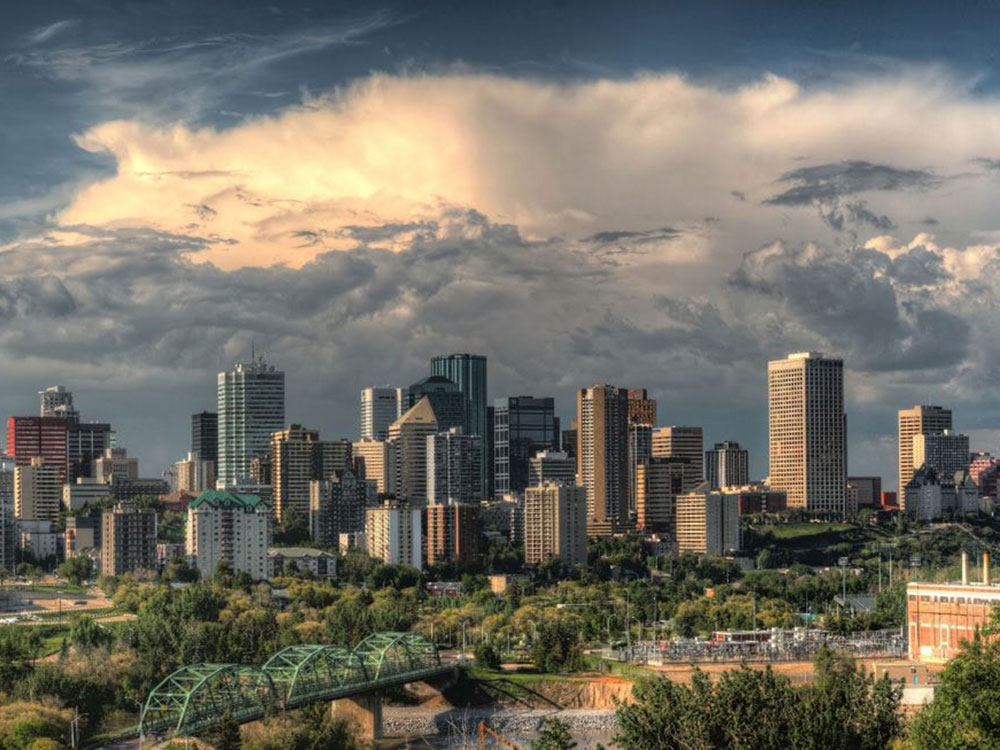As residents of Alberta’s most progressive city, Edmontonians agree that change in their city’s urban form is long overdue.
As elsewhere in Canada, there is no question that curbing urban sprawl and increasing density in Edmonton are essential to the creation of a more resilient, equitable city. But the devil is in the details, and tensions arise when it comes to choosing the best path forward.
A case in point is Edmonton’s proposal for a new zoning bylaw.
In the works since 2018, the new bylaw intends to “enable a city where all people, places and businesses can thrive and prosper,” by streamlining the city’s planning regulations and allowing for a greater variety of building types, uses and activities on a given site.
While this vision is shared by many Edmontonians, not everyone agrees the renewed bylaw will produce the equitable outcomes it purports. Why?
Two sides of the same coin
For Kevin Taft, a steering committee member of the Coalition for Better Infill, a resident-led group calling to delay the approval of the renewed zoning bylaw, the city’s proposal introduces too many changes too quickly and disregards the negative consequences redevelopment could have on some Edmontonians.
“One of the things I’ve observed, and I think this will be a direct consequence of this zoning bylaw, is an acceleration of gentrification, which goes against the whole notion of equitable zoning,” Taft says.
He notes that “some of the most effective urban change happens in small steps, as you can make corrections as you go along. If you bring in change in carefully managed steps, then you can respond to the unintended consequences.”
For others, the new bylaw presents an opportunity to put an end to exclusionary zoning practices that not only have caused house prices to rise but also continue to undermine the environment.
“The new zoning bylaw is going to legalize more density across the board,” says Yash Bhandari, a co-founder of Grow Together Edmonton, a pro-housing group. “The hope with that is to allow for more growth in our existing neighbourhoods, to allow for more affordable housing options, and it’s going to help us grow without constantly continuing to sprawl outwards.”
While the mission statements of both Grow Together Edmonton and Coalition for Better Infill emphasize the importance of housing affordability and climate resiliency for the future of their city, they disagree on the approach to address these issues. One group is wary a market-driven approach could undermine what they value. The other believes the market can create the kind of city they aspire to.
This conundrum is at the core of urban planning itself.
Laying an exclusionary framework
Envisioned as a tool to regulate the location of noxious activities, such as landfills and slaughterhouses, zoning has evolved to enable the best and highest use of our cities’ land.
According to Sandeep Agrawal, director of the University of Alberta’s school of urban and regional planning, zoning “lays down how a city may eventually look.”
But the application of this planning tool has implications that go beyond the physical appearance of our cities, as it has tended to favour the interests of those in power, be it homeowners, developers or lenders.
In the 1960s, when Edmonton’s current zoning bylaw was created, market forces drove planners to enable policies that favoured urban sprawl, single-use separation and car dependency. The adoption of these exclusionary zoning practices facilitated the marginalization of racialized and lower-income groups by those in power.
“Over time, zoning began to be used to segregate people,” Agrawal says, pointing at single-family zoning as an example of a policy that subtly blocked access from certain neighbourhoods.
Planning documents from that era, including Edmonton’s General Plan, also highlight issues related to higher densities, such as reduced access to sunlight, loss of trees and increased traffic.
While these remain valid concerns today, Agrawal warns that these issues are also used as a proxy to continue to exclude certain groups of people by portraying self-interest as a public interest.
“People have become a little bit more aware, and have become a little bit more sophisticated,” Agrawal says. “So they’re not going to say in public hearings that, ‘Well, I don’t want those people.’ What they would do is they would couch it under the umbrella of traffic and congestion, the environment, privacy and sunlight.”
This, however, doesn’t mean that those without regard for neighbourhood character or the urban tree canopy are immune to the powerful dynamics of class and race.
For Eliot Tretter, a professor of geography at the University of Calgary, looking at urban issues such as housing affordability from a metropolitan scale, as a zoning bylaw would do, continues to obscure the marginalization of certain groups.
“During the era of urban renewal, [people] would be forcibly relocated,” Tretter says, noting that redevelopment of some established communities today can lead to similar displacements. “Some of it has to do with the uneven way market dynamics [shape] the urban landscape.”
A shifting paradigm
For lenders, after the 2007 crisis, the rigidity of single-use zoning was considered no longer an advantage but a risk, and mortgages flowed to those whose properties could accommodate a wider array of uses. While developers have been quick to adapt to the new standard, city planners have been slow to bring people along with the times.
“The planning principles have shifted from suburban type of development to avoiding sprawl at any cost,” Agrawal says. “But I don’t think the public is there.”
Today, those wary of letting the market decide what gets built and where feel uneasy about the pervasive influence of real estate developers in the planning process.
According to Taft, a former Liberal MLA, when the City of Edmonton launched the zoning bylaw renewal initiative in 2018, developers “were very well positioned to get in right away and shape the basic structure of the bylaws,” as they had been organizing for several years prior.
For others, the deregulated market developers advocate for is a force for good, as reducing the barriers that limit what can be built and where is expected to unleash housing supply, unlock affordability and choice, and prevent further urban sprawl.
While there’s no question that the role of developers in the planning process is paramount to the creation of new housing in any city, their involvement is rarely unproblematic. “Big developers may have [a] bigger lobby, they may have more money, and they could exert undue influence,” Agrawal says. “That’s why we have the different levels of government to watch out for it and do things in the interest of multiple publics.”
The limits of zoning
As a tool, Edmonton’s proposed zoning bylaw can be used to advance the interests of decision-makers, corporations, real estate developers, homeowners or the public. For this reason, taking into consideration how certain policies could discriminate against some segments of the population while favouring the interests of others is essential to move forward in the creation of a more equitable city.
But as a blunt instrument, the capabilities of zoning are also limited. “For affordability of housing, zoning can only do so much,” Agrawal says. “The rest is all what the market can bear. Developers are going to come and builders are going to build something if there’s a market for it.”
Moreover, in a paper published in May, Agrawal writes that changes to the zoning bylaw alone won’t transform Edmonton into a more inclusive and compassionate city. “Achieving all dimensions of equity requires a holistic approach, with reforms across the entire city operation and administration.”
In this context, it seems unrealistic to believe that simply by enabling more density and housing choice, our neighbourhoods will foster inclusion and become more equitable for all, in Edmonton or elsewhere. “If you just change the land use code, it may just overlay an existing system of segregation or inequality,” Tretter says, “and not generate lots of housing in all different kinds of places in the city.”
In other words, regardless of zoning, capitalism will continue to produce the inequitable results that threaten our right to housing.
Because increasing choice for some doesn’t necessarily produce more equitable outcomes for all, Edmonton councillors have a challenging task at hand. When the proposed zoning bylaw comes to council for consideration on Oct. 16, and residents bring their ideas and concerns forward at a public hearing, it’s important decision-makers keep sight of whose interests are being advanced by zoning, and whose are being relegated.
“Class and racial dynamics become very important in terms of the capacity that one can, or cannot, have to respond to changes,” Tretter says. “Adaptation without consideration of power, or one’s relative position in the system of inequalities, is not an adequate way of understanding urban change.” ![]()
Read more: Alberta, Housing, Urban Planning

















Tyee Commenting Guidelines
Comments that violate guidelines risk being deleted, and violations may result in a temporary or permanent user ban. Maintain the spirit of good conversation to stay in the discussion and be patient with moderators. Comments are reviewed regularly but not in real time.
Do:
Do not: